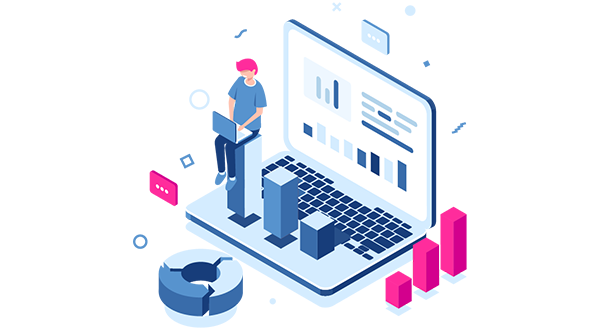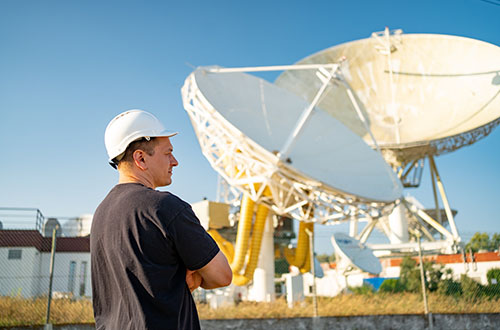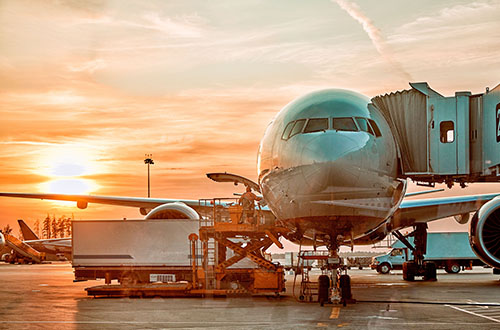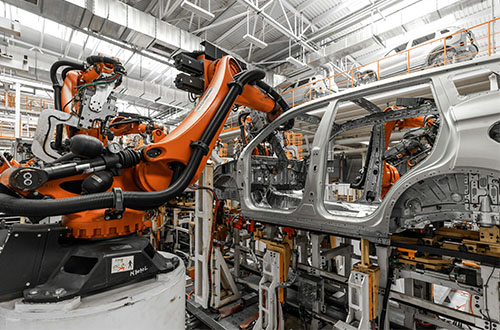

Carahsoft + mLogica Partnership

The mLogica Migration Team
Automated Mainframe-to-Cloud Migrations – Leveraging Gen-AI to
Overcome the Last Mile Challenge
The “Last Mile Challenge” in Mainframe Modernization
Modernizing legacy mainframe systems is a strategic priority for organizations aiming to harness the agility, scalability, and cost-efficiency of the cloud. However, many enterprises encounter the “Last Mile Challenge” — a critical bottleneck in mainframe-to-cloud migration. This stage often reveals complex hurdles such as overlooked Assembler/PL1 code and undocumented system dependencies, making the final steps of migration time-consuming, risky, and expensive.
The “Last Mile Challenge” isn’t just a technical problem; it represents the intersection of decades-old code, business-critical applications, and the urgent need for modernization. Without a precise and intelligent approach, organizations risk cost overruns, prolonged downtimes, and even complete project failures. The complexity of mainframe environments, often running on outdated programming languages and architectures, adds another layer of difficulty that cannot be overlooked.
The Carahsoft and mLogica Partnership
The strategic partnership between Carahsoft and mLogica combines Carahsoft’s extensive reach in government and enterprise sectors with mLogica’s industry-leading migration solutions. This collaboration empowers organizations to modernize their legacy mainframe systems efficiently and securely. By leveraging mLogica’s LIBER*M Suite, Carahsoft’s customers gain access to cutting-edge automated migration tools that streamline the transition to cloud environments, reduce operational risks, and accelerate digital transformation initiatives.
Key Challenges in Mainframe-to-Cloud Migration
Risks of Manual Migration
Manual migration methods often lead to delays, cost overruns, and a high failure rate. Teams can spend countless hours attempting to understand legacy codebases, only to miss critical dependencies or misinterpret business logic, resulting in costly rework and operational disruptions. Moreover, manual processes are prone to human errors, increasing the likelihood of critical failures during migration. These risks lead to a high rate of project failures.
Risks of Manual Migration
Many mainframe applications have evolved over decades, accumulating layers of changes without adequate documentation. This creates a minefield for developers tasked with refactoring the code. Assembler and PL/1 programs, in particular, pose significant challenges due to their complexity and lack of modern support. The absence of documentation means that business logic, embedded deep within the code, can be misunderstood or lost during the migration process, potentially leading to functional discrepancies in the new environment.
Undocumented Dependencies and Hidden Risks
One of the most significant challenges in mainframe migration is the presence of undocumented dependencies between systems. These hidden connections can cause failures if not correctly identified and mapped before migration. For instance, a seemingly isolated application might have critical data exchange points with other systems, and missing these dependencies could disrupt entire workflows.
AI-Driven Solutions: mLogica’s LIBER*M Suite and GenAI Integration
mLogica’s LIBER*M Suite revolutionizes mainframe-to-cloud migration by automating the most complex aspects of the migration process. Through advanced AI and machine learning algorithms, LIBER*M handles code discovery, dependency mapping, and code refactoring with unmatched precision. This comprehensive approach significantly reduces the time, cost, and risks associated with manual migration methods.
- Automated Code Discovery and Dependency Mapping: LIBER*M scans the entire mainframe environment, identifying hidden dependencies, business rules, and undocumented code segments. This eliminates guesswork, reducing the risk of missing critical components during migration. The automated mapping creates a holistic view of the system architecture, allowing for better planning and execution.
- GenAI-Powered Code Translation: GenAI plays a transformative role in translating legacy mainframe logic into modern, cloud-native code. Using natural language processing and machine learning models, GenAI accurately converts Assembler and PL/1 code into scalable languages like Java and Python, ensuring that the business logic remains intact while optimizing for cloud performance. Gen AI’s intelligent algorithms also refine the translated code, improving its maintainability and performance in the cloud environment.
- Automated Testing and Validation: The LIBER*M Suite includes automated testing and validation tools that ensure the migrated applications function as intended. By running comprehensive test cases, the suite verifies that the new cloud-native code replicates the original mainframe application’s behavior, minimizing post-migration issues.
Case Study: Financial Institution Migrates 30-Year-Old PL/1 Applications to AWS
A leading financial institution faced the daunting task of migrating its 30-year-old PL/1 applications to AWS. With millions of lines of undocumented code and critical dependencies, manual migration was deemed too risky and time-consuming.
By leveraging mLogica’s LIBER*M Suite, the institution achieved remarkable results:
- 70% Faster Migration: Automated code discovery and GenAI-driven translation significantly accelerated the migration timeline.
- 90% Reduced Manual Effort: The intelligent automation minimized human intervention, allowing the migration team to focus on validation and optimization rather than manual coding.
- Enhanced Code Quality: The GenAI algorithms optimized the translated code, resulting in better performance and easier future maintenance.
The result was a seamless migration to AWS with minimal downtime, preserving business continuity and enhancing system scalability. The institution also benefited from reduced operational costs and improved system agility, allowing them to respond more effectively to market demands.
Best Practices for Successful Mainframe-to-Cloud Migration
- Combine AI Tools with Expert Validation: While AI-driven tools like LIBER*M automate much of the migration process, mLogica’s migration experts play a critical role in validating the translated code and ensuring that business logic and compliance requirements are maintained. mLogica’s migration experts provide context that AI may not fully grasp, ensuring that the final product meets both technical and business standards.
- Adopt a Phased Migration Approach: Breaking down the migration into manageable phases reduces risk and minimizes downtime. A phased approach allows for iterative testing, ensuring each component functions correctly before full-scale deployment. This strategy also enables organizations to gather feedback and make necessary adjustments during the process.
- Continuous Monitoring and Optimization: Post-migration, it’s essential to continuously monitor the new cloud environment to ensure optimal performance. Regular audits and performance checks help identify potential issues early and allow for ongoing optimization, ensuring the long-term success of the migration.
- Invest in Training and Change Management: Migrating to the cloud involves more than just technology—it also requires a shift in organizational mindset and skills. Providing training for development and operations teams ensures they can effectively manage and optimize the new cloud-native applications.
Bridging the Skills Gap Through Automation
The mLogica and Carahsoft partnership demonstrates that intelligent automation with migration experts are the keys to overcoming the Last Mile Challenge on any legacy modernization project. By bridging the skills gap and reducing manual effort, AI-driven solutions like LIBER*M ensure faster, safer, and more cost-effective mainframe-to-cloud migrations. Automation not only accelerates the process but also enhances the quality and reliability of the migrated applications.
The ability to efficiently modernize legacy systems empowers organizations to innovate faster, reduce operational costs, and remain competitive in a rapidly evolving digital landscape.








































